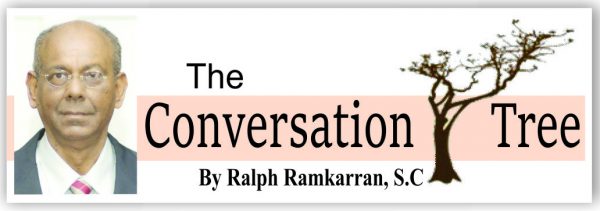 At the Georgetown mayoral elections on November 30, AFC Councillor Michael Leonard was nominated by his lone colleague. Having only two members, no one seconded the nomination and it was declared to be invalid. This event, embarrassing for the AFC, symbolises the decline from its heyday in 2005, when Raphael Trotman, Khemraj Ramjattan and Sheila Holder, all MPs representing the three parties represented in the National Assembly – the PNCR, the PPP and the WPA – decided to establish the AFC. There was great anticipation by many who had become jaded with the main political parties, the PPP and the PNCR. Adding to the expectation was the fact that the landscape was arid. The WPA, the last party of significance that had attracted a degree of popular support, had been established in 1974. However, by the time free and fair elections returned in 1992, it had lost traction and failed to achieve significant electoral support. It obtained 2.4 percent at the 2001 elections, which it contested with the Guyana Action Party. The TUF, which was established in 1960, obtained 16 percent support at the 1961 elections. Returning at the 1980, after an absence during the 1970s, it could only persuade 2.9 percent of the electorate to support it. At the local government elections recently held, the AFC secured only 3.9 percent support, after having obtained 10 percent in the 2011 general elections.
At the Georgetown mayoral elections on November 30, AFC Councillor Michael Leonard was nominated by his lone colleague. Having only two members, no one seconded the nomination and it was declared to be invalid. This event, embarrassing for the AFC, symbolises the decline from its heyday in 2005, when Raphael Trotman, Khemraj Ramjattan and Sheila Holder, all MPs representing the three parties represented in the National Assembly – the PNCR, the PPP and the WPA – decided to establish the AFC. There was great anticipation by many who had become jaded with the main political parties, the PPP and the PNCR. Adding to the expectation was the fact that the landscape was arid. The WPA, the last party of significance that had attracted a degree of popular support, had been established in 1974. However, by the time free and fair elections returned in 1992, it had lost traction and failed to achieve significant electoral support. It obtained 2.4 percent at the 2001 elections, which it contested with the Guyana Action Party. The TUF, which was established in 1960, obtained 16 percent support at the 1961 elections. Returning at the 1980, after an absence during the 1970s, it could only persuade 2.9 percent of the electorate to support it. At the local government elections recently held, the AFC secured only 3.9 percent support, after having obtained 10 percent in the 2011 general elections.
The AFC is at a fork in the road. Logic would suggest that it should take the bend leading to independence. Necessity for survival, as the AFC would perceive it, would force it to take the bend leading to further subservience to APNU. At the time when the AFC was established, the nature of the Guyanese electorate was changing. The decrease in the Indian population and the growth of the Amerindian and Mixed populations, together with the dominance of ethnic considerations in politics, were having an impact on voting patterns. Most important, the middle class, which had been decimated by impoverishment and migration in the 1970s and 1980s, had grown again and was impatient with ethnic politics and insufficiently robust economic growth, which was possible as the latter Hoyte and early Jagan years had shown. The economic benefits which were later available to business did not reach the rungs of emerging entrepreneurs, while they saw favoured ones benefitting handsomely from ‘connections.’
In these conditions, the AFC obtained 8 percent of the votes in 2006 and 10 percent in 2011. When it joined with APNU under the terms of the Cummingsburg Accord in 2015, there was much rejoicing among APNU and AFC supporters, as well as those who believed that the PPP/C had run its course. In governing, the coalition promptly abandoned its main promise of constitutional reform to lead to inclusive governance and, like the PPP/C before it, referring to its PPP and Civic alliance, baptized its electoral contrivance of APNU+AFC as inclusive governance. Both the APNU and AFC also promptly forgot that they rode to power on a heavy sprinkling of support from persons who had been voting for the PPP in the past and that they scrambled to office by one seat, which ought to have dictated soft, moderate and inclusive steps. The arrogance that governmental bestows took little time to emerge.
The alliance was done in mainly by the faltering economy. With the decline in production in the main sectors, APNU+AFC initiated policies which sucked consumption out of the economy and deployed it for unproductive activity, instead of even more fully incentivising consumption and relaxing hindrances to business activity. The electorate has rebelled, as the local government elections’ results have demonstrated. But the AFC has also been seen as aggressively supportive of APNU+AFC policies which the PPP is deathly afraid of, such as what the PPP believes are moves to manipulate the next general elections. The PPP supporters who the AFC had encouraged to cross over have now moved away because the AFC now appears not as a moderating influence on APNU (PNCR), but as a facilitator. The AFC has been unable to persuade APNU that it has only a one-seat majority which it needs to sustain. The PNC, in all of its manifestations, has not been able to obtain more than 42 percent of the support of the electorate in its history. With the AFC’s 4 percent at the general elections, if it remains the same, the coalition will not attain that magic number of 50 percent plus 1. This opens up to the PPP and many others terrifying possibilities of what will happen in 2020, with the AFC’s silence or active connivance, as its present posture indicates.
Tactical factors, such as perhaps internal dissatisfaction by APNU supporters at the ‘giveaway’ in the Cummingsburg Accord, rather than the strategic necessity of continued electoral success, may have been allowed by APNU to reject the AFC demands for the local government elections. The short-sighted strategy of subservience rather than robust, open, debate suggests connivance and subservience by the AFC, rather than partnership. Above all, the failure to observe its promises over constitutional reform is an important factor. All these have contributed to the fall of the AFC, until now, unless it takes the more difficult turn beckoned by the other fork in the road.







